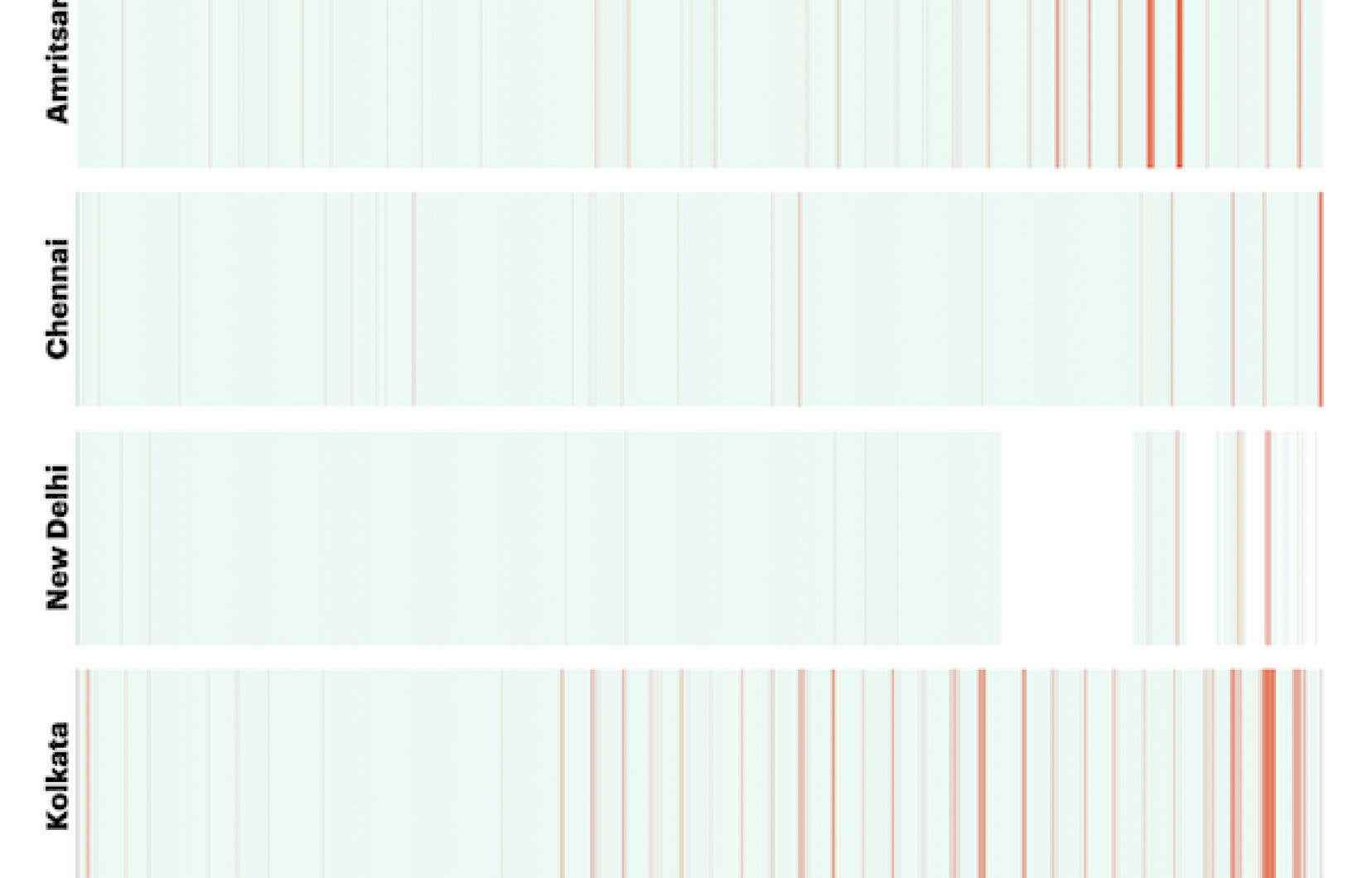This text is taken from the “Courrier de la planete” of May 17, 2022. To subscribe, click here.
The heat wave that hit India and Pakistan this spring was exceptionally hot and early. In addition to causing dozens of deaths, it undermined wheat crops, which prompted the Indian government to ban exports of this cereal that feeds the world.
Such heat waves are obviously made more frequent and intense by climate change. Already, in the last decades, some cities are experiencing more and more episodes, as seen in this graph created by The duty.
We display the days when the “wet bulb temperature” exceeds 30°C. This measurement combines the actual temperature and relative humidity into a single value, similar in principle to the “humidex index” used in Canada.
When the air is dry, it lowers the wet-bulb temperature. The human body then finds it easier to evacuate its heat through perspiration, because sweat evaporates easily. When the air is humid, it is the reverse.
The wet-bulb temperature is thus the one that matters to us mammals. It is estimated that a human can survive barely six hours at wet-bulb temperatures exceeding 35°C, which are extremely rare for the moment on Earth.
On the graph, we can see that the frequency of very hot and humid episodes is on the rise in the last decades in certain cities, such as Amritsar (Punjab, north) and Kolkata (West Bengal, east). Other cities less accustomed to the terrible combination, such as Chennai (Tamil Nadu, south-east), have also had serious episodes recently.
According to a 2010 study, the 35°C wet-bulb barrier would begin to be regularly crossed in “small areas” of the world where the average temperature would be 7°C warmer than in pre-industrial times.
